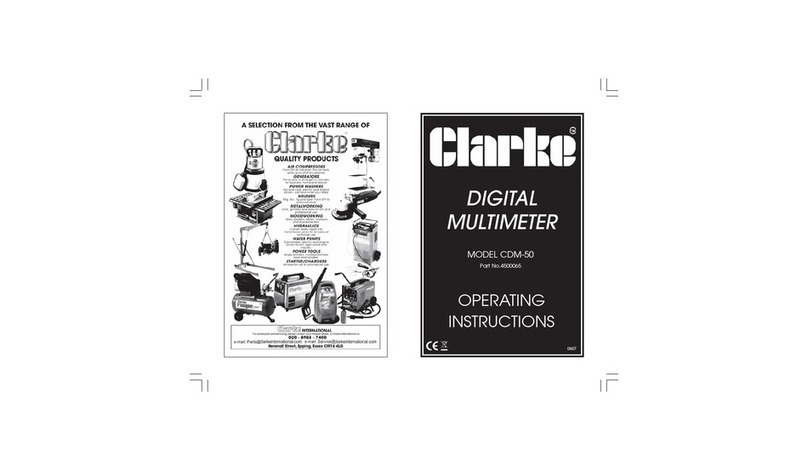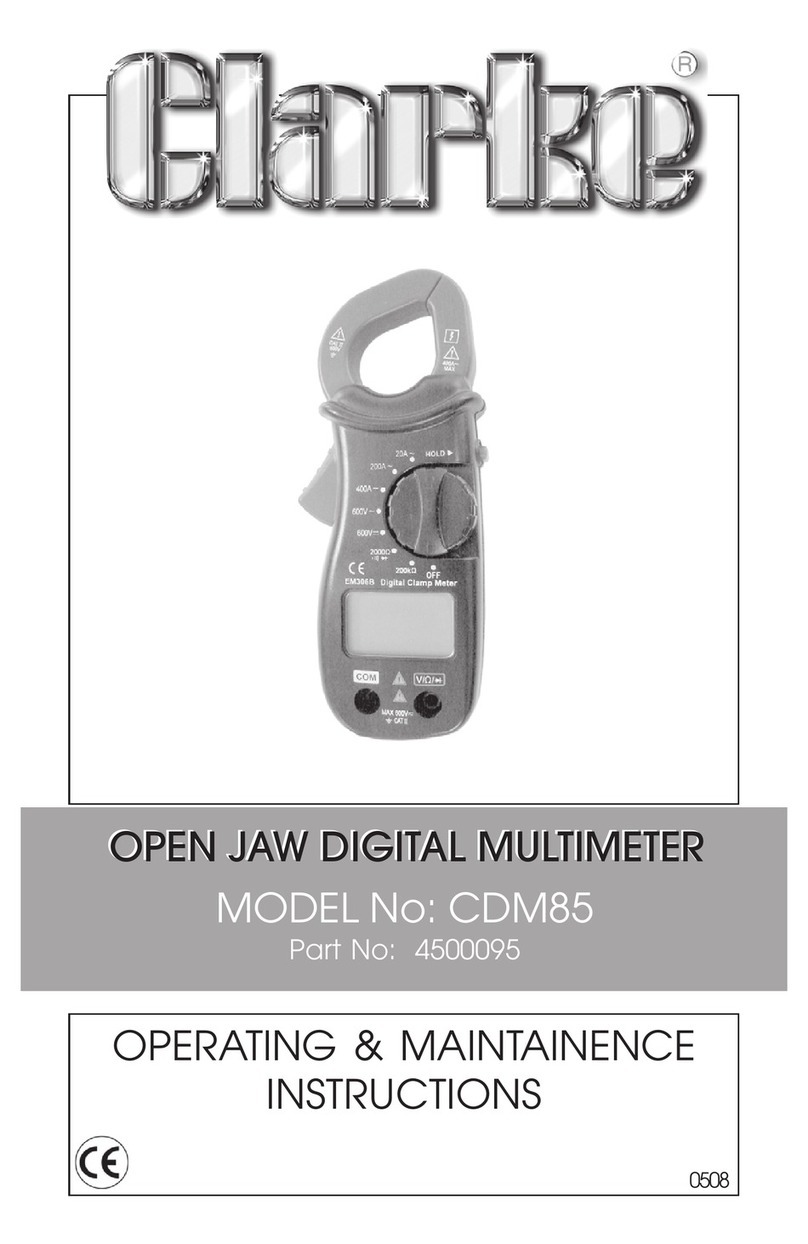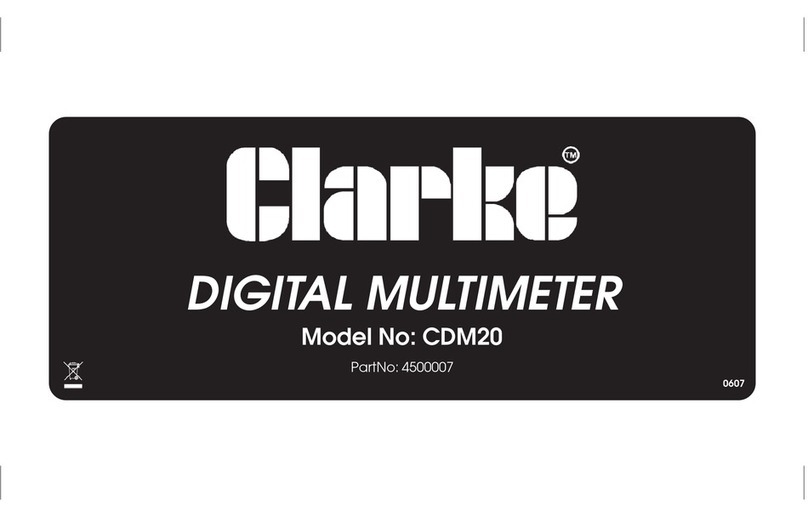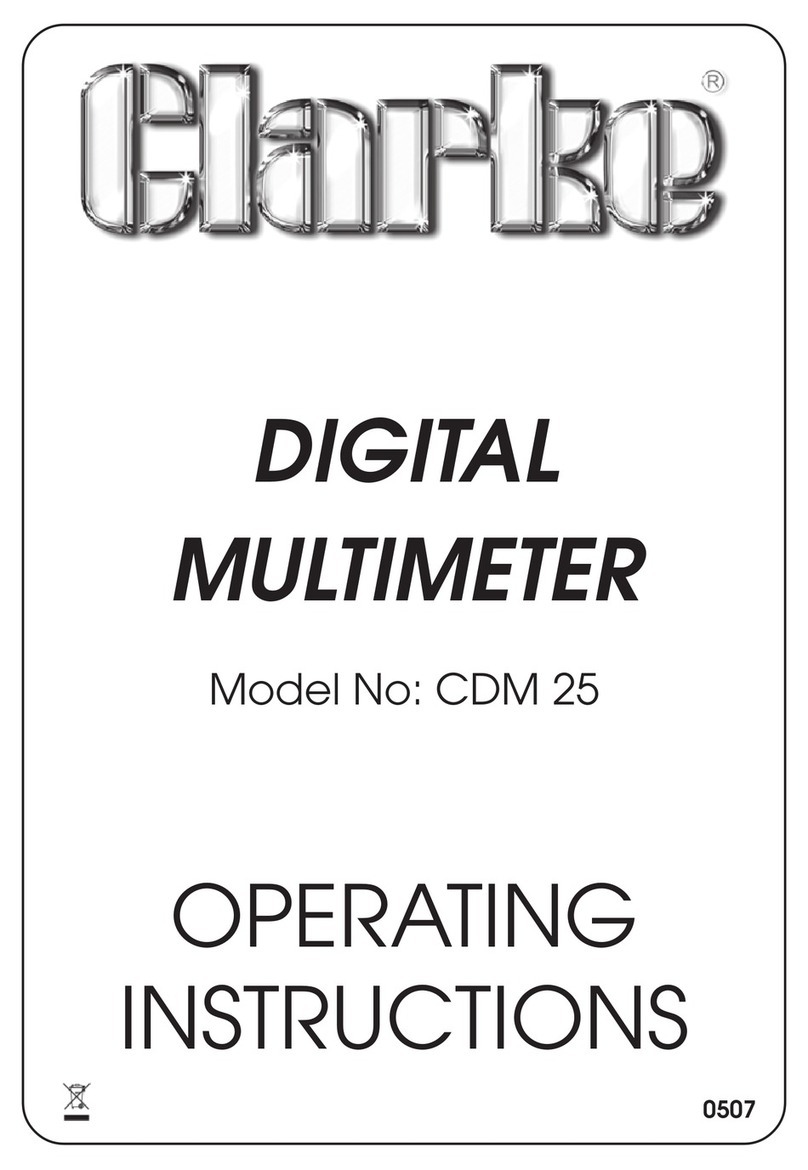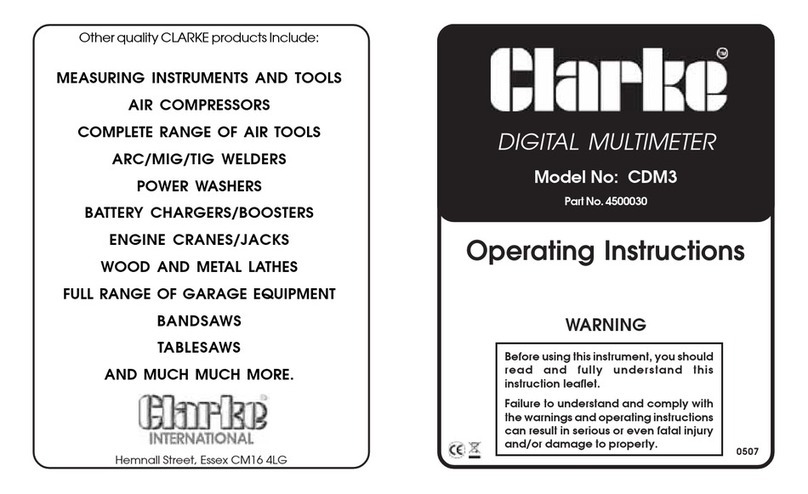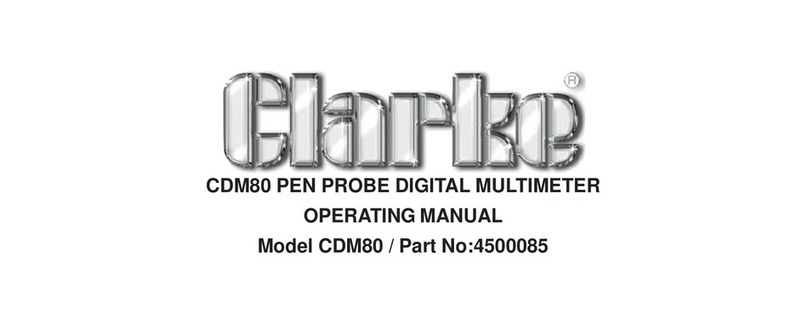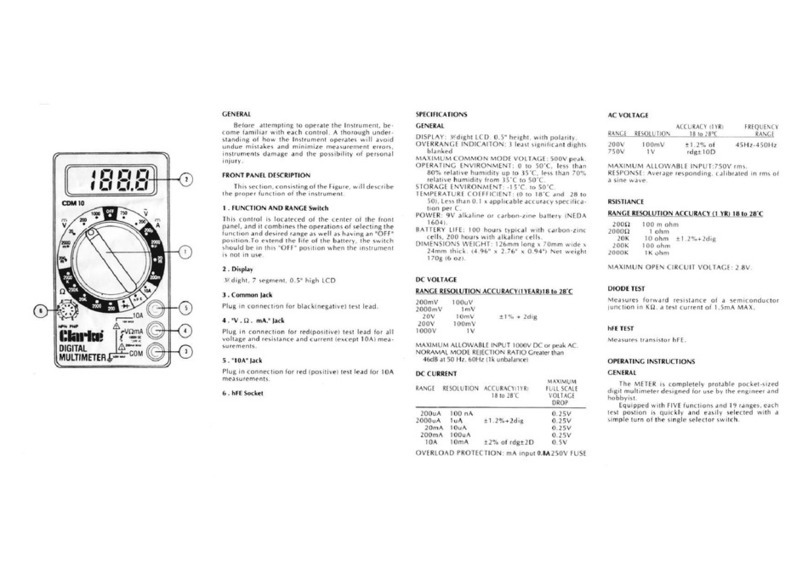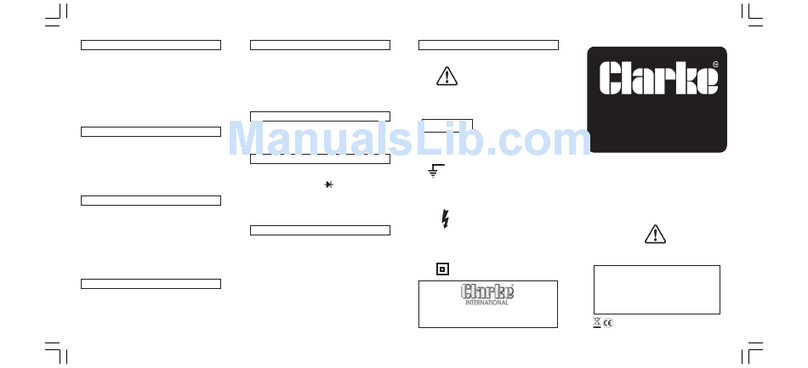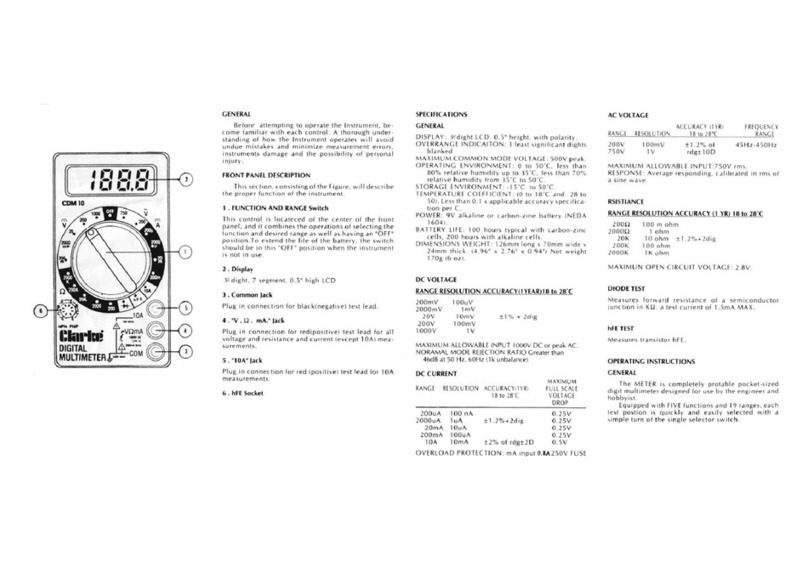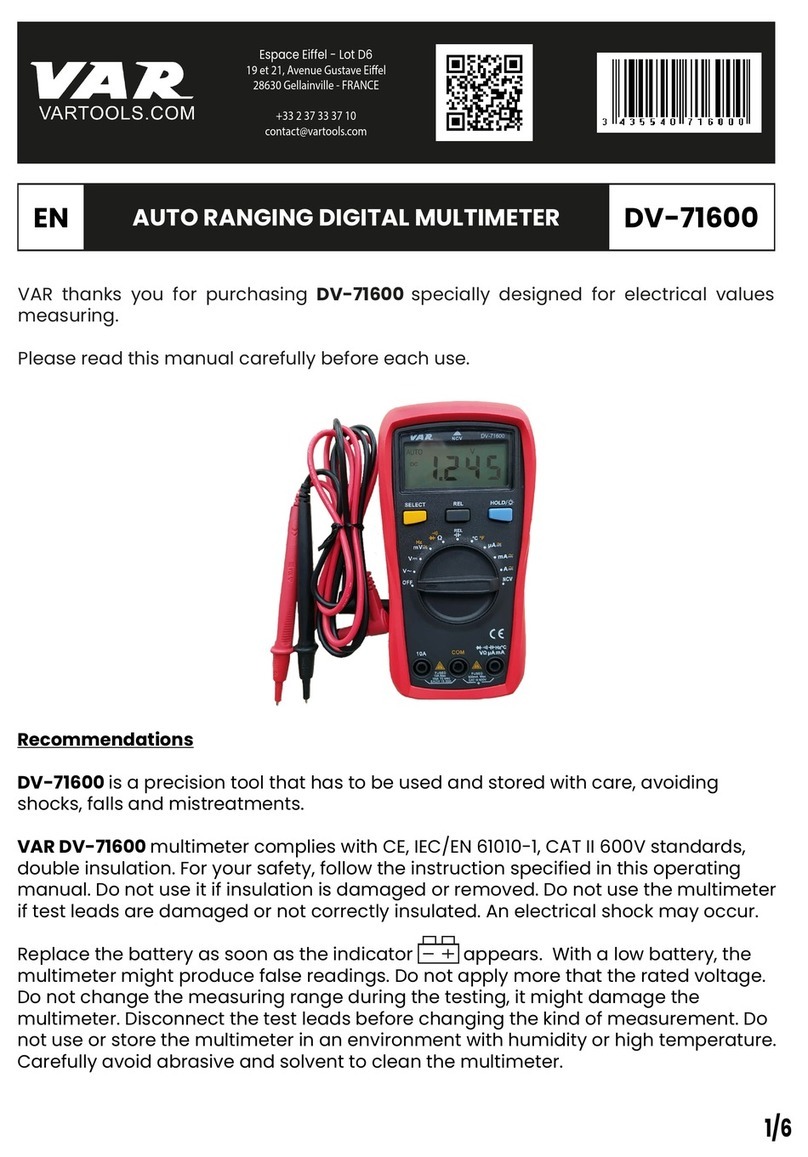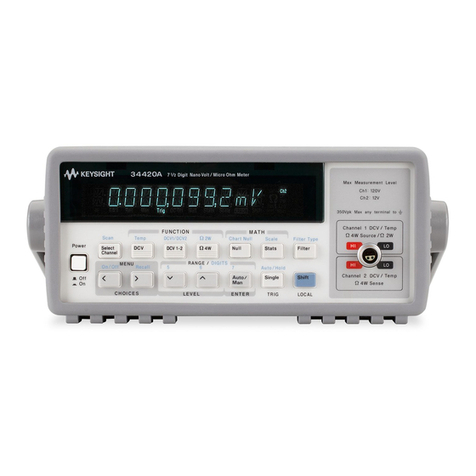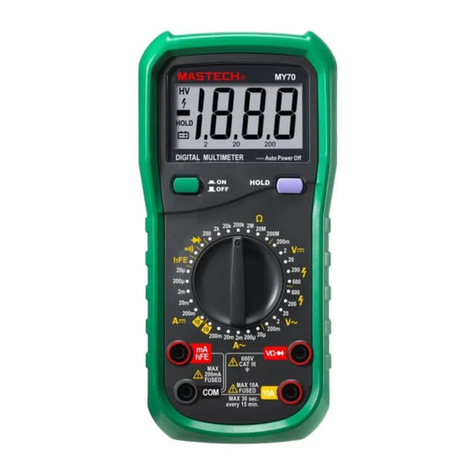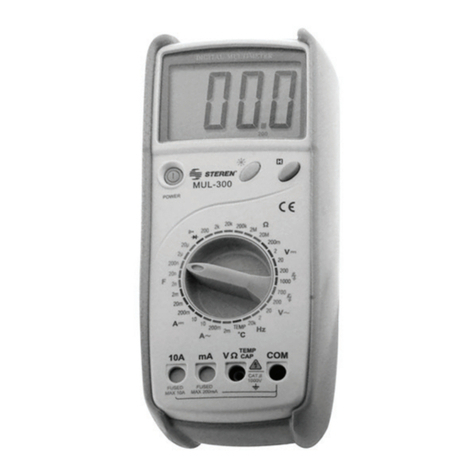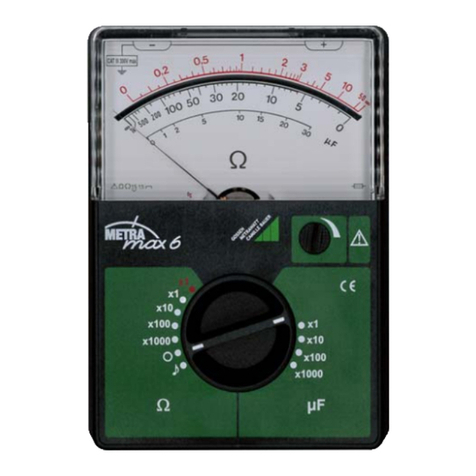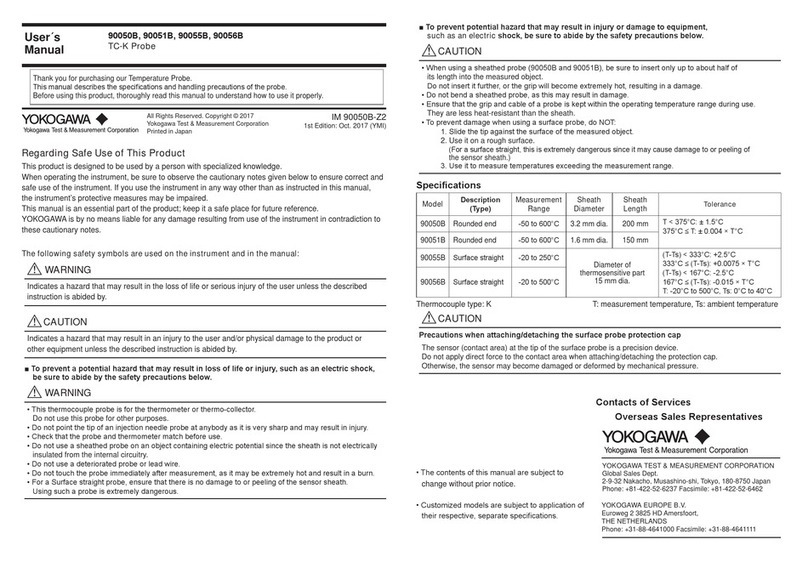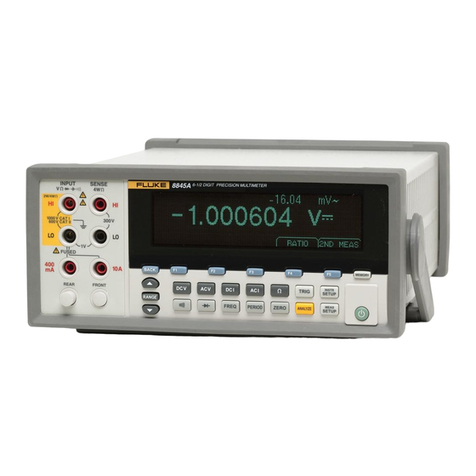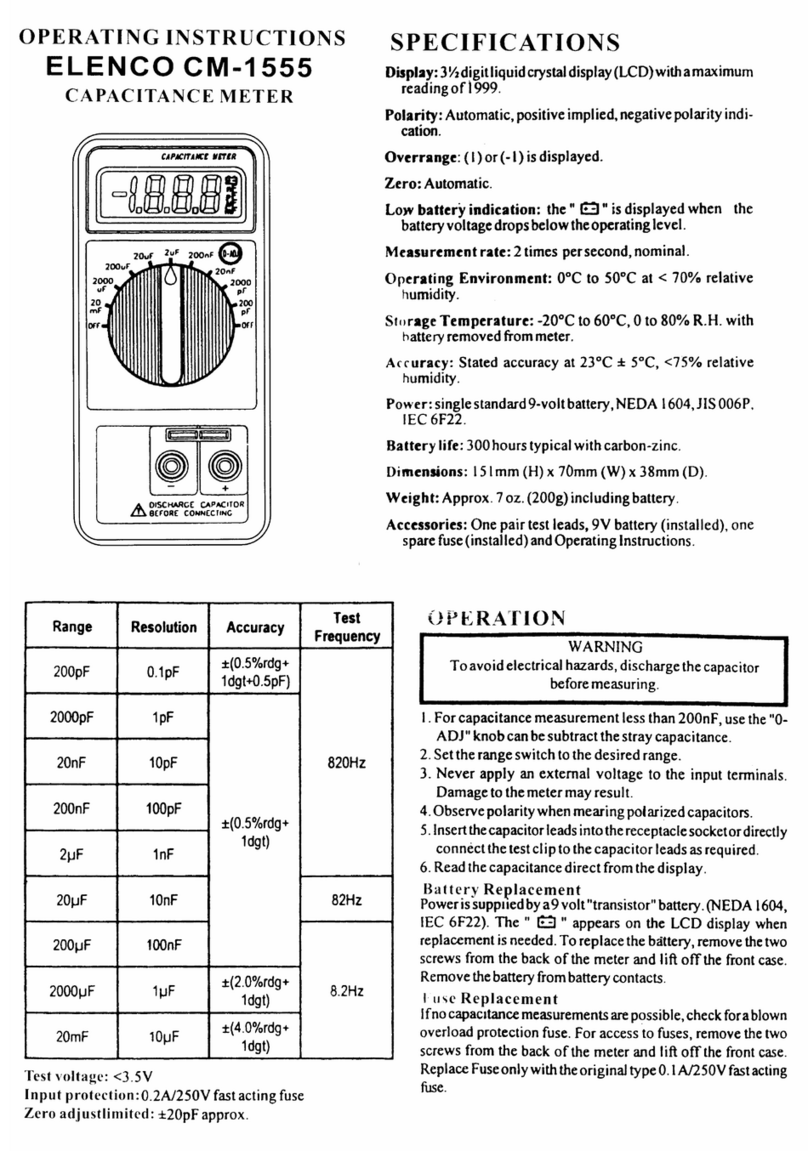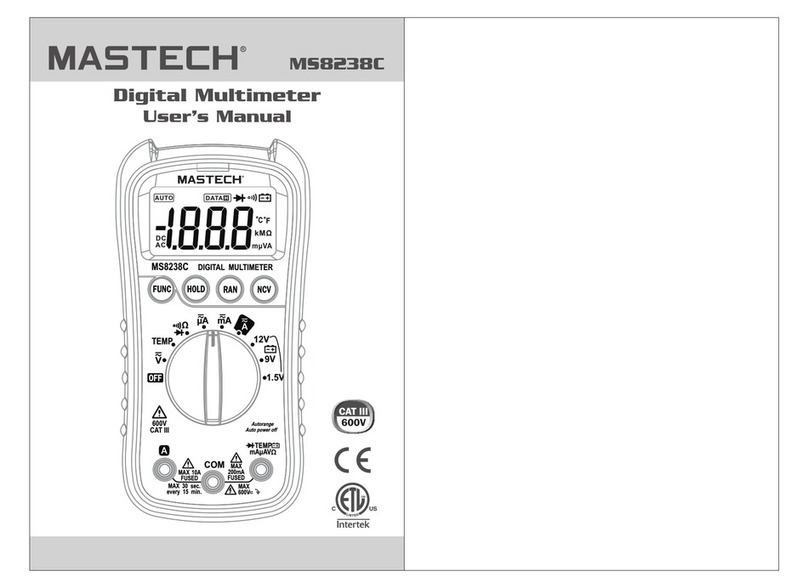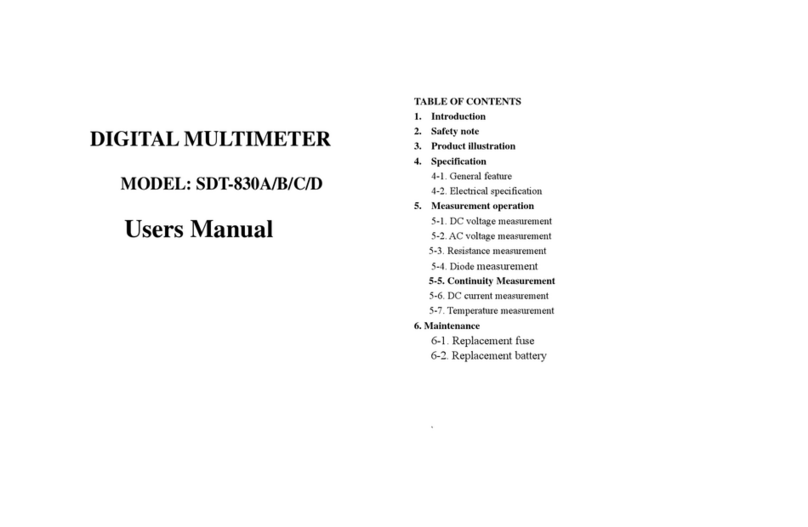8
Parts & Service: 020 8988 7400 / E-mail: Parts@clarkeinternational.com or Service@clarkeinternational.com
NOTE: When "l " is shown on the LCD, it means the measurement has
exceeded the allowable range. A higher range should be
selected.
NOTE: When the scale of the value to be measured is unknown, select
the highest range first and lower the range accordingly.
DC/AC CURRENT MEASUREMENT
1. Plug the black test lead into the "COM" jack.
2. When the current to be measured is under 200mA, plug the red test lead
into the "mA" jack; when the current to be measured is over 200mA but
under 10A, plug the red test lead into the "10A" jack.
3. Set the rotary switch to the "A-" position for DC measurement and "A~" for
AC measurement and at the proper range.
4. Connect the test leads to the circuit.
5. Read the value on the display.
6. The polarity symbol denotes the polarity of the red test lead.
• The polarity symbol denotes the polarity of the red test lead.
NOTE: When ‘1’ is shown on the LCD, it means the measurement has
exceeded the allowable range; a higher range should be
selected.
NOTE: When the scale of the value to be measured is unknown, select
the highest range first and then lower the range accordingly.
NOTE: " " indicates the maximum current of the mA jack is 200mA and
the maximum current of the 10A jack is 10A. At either jack, current
exceeding the limit will blow the fuse.
RESISTANCE MEASUREMENT
Plug the black test lead into the "COM" jack and the red test lead into the "V Ω
Hz" jack.
WARNING: USE CAUTION WHEN MEASURING HIGH VOLTAGE CIRCUITS TO
AVOID ELECTRICAL SHOCK AND INJURY. DO NOT TEST VOLTAGES HIGHER
THAN 600V DC/AC. TO
AVOID ELECTRICAL SHOCK AND INJURY POWER OFF THE CIRCUIT AND
DISCHARGE THE CAPACITANCE BEFORE MEASURING CURRENT.
WARNING: TO AVOID ELECTRICAL SHOCK AND INJURY POWER OFF THE
CIRCUIT AND DISCHARGE THE CAPACITANCE BEFORE MEASURING
RESISTANCE.

